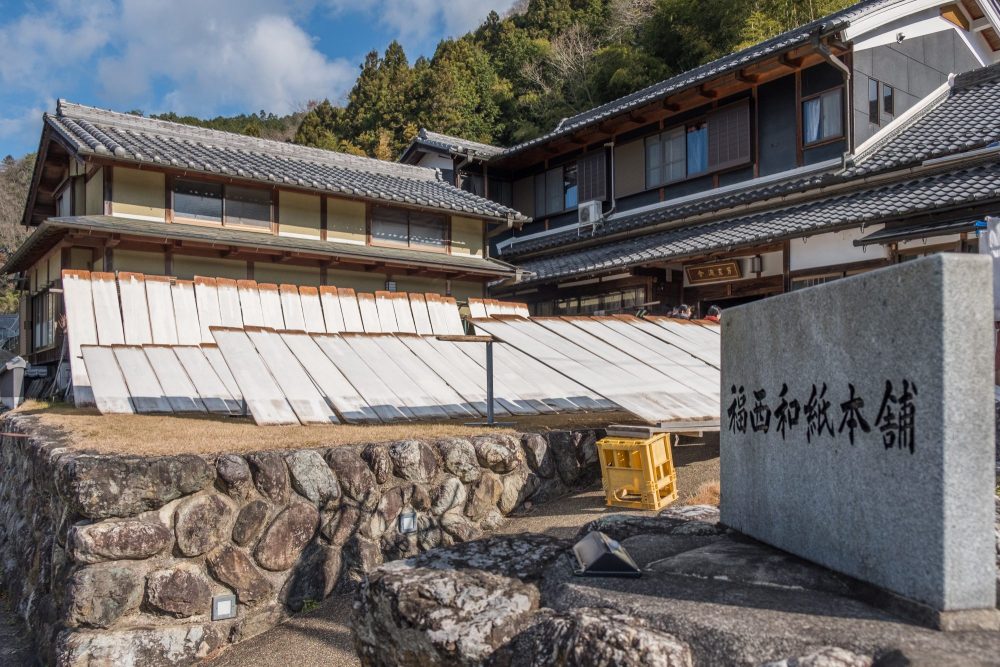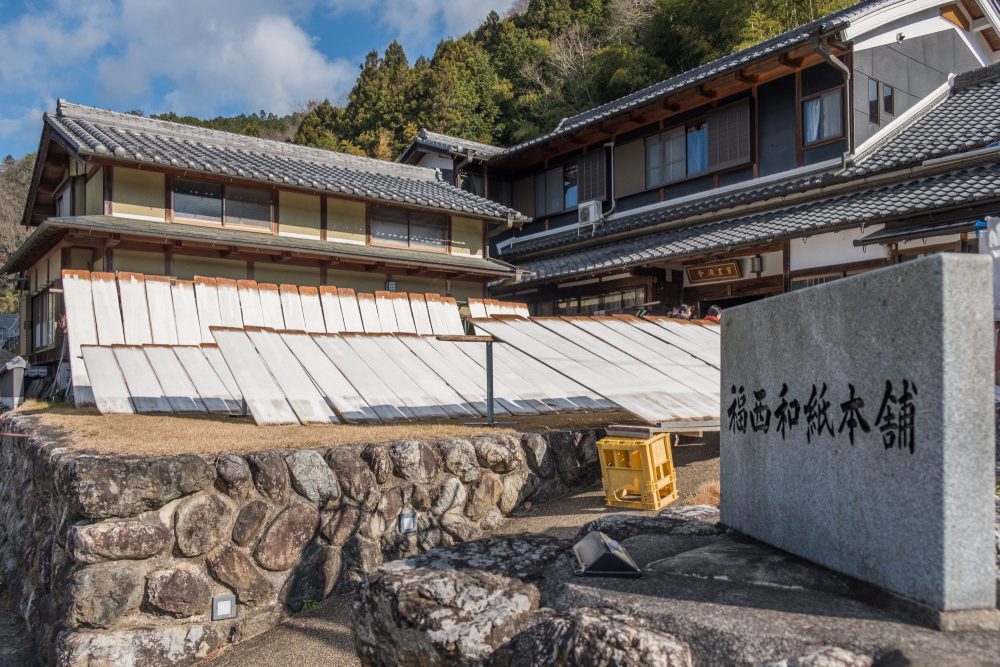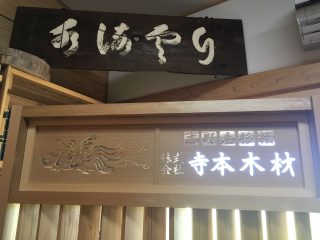Hi, I’m Gao Li, an international student studying at Nara Women’s University.
I am also an internship student for Yoshino Town, Nara Prefecture, which is famous for its very old history and rich forest.
I had a valuable experience in learning to make “washi,” a traditional Japanese paper, so I would like to tell you about it in this article.
More than 1,300 years ago, Emperor Tenmu fled to the Kuzu area of Yoshino as a result of a battle over succession to the throne. He was welcomed, sheltered, and protected by the local people. He deeply loved the local people who helped him, and to show his thanks he taught them how to make washi paper.
This method of paper making has been passed down from generation to generation and still continues to be practiced in current times.
The secret in making high-quality washi paper is to expose it to clean, pure water during the cold winter months. This traditional method has been nurtured by the clear water of the Yoshino River for centuries.
Washi paper made in the Kuzu area is loved by many people because of its soft and smooth texture, and is now one of the prime examples of Japanese traditional crafts.
The Fukunishi Washi Honpo Workshop that I visited is one of the few places that inherited the handmade washi paper-making method handed down from the days of Emperor Tenmu. On top of inheriting the old method, they are also continuously improving papermaking technology.
Washi paper made by Fukunishi Washi Honpo Workshop is used in a variety of fields and is put to use in repairing books, crafts, and the arts. Many famous artists around the world use Fukunishi’s washi paper, including restoration work on Japanese national treasures and important cultural properties, as well as the restoration of cultural properties exhibited in Europe.


On the day I visited, I experienced the process of making and coloring washi paper.
The process is as follows:
1. Dip a specialized box, which contains a fine mesh, into a tub of water containing Kozo sap (a kind of tree, and one raw material used in making washi paper).
2. After assembling the washi paper using the box, apply various coloring agents made of natural materials (flowers, plants, etc.). In this coloring process, you can decide the layout of colors and designs according to your personal preference. I selected the colors and designs carefully as I could not redo it.

▲ The coloring process
3. Soak the box in a tub containing kozo sap again.

4. Take out the washi paper from the box and remove any impurities.
Done!
The colors of the finished washi paper were as bright as marshmallows on display in a candy store!
After making your washi paper, you will need to leave it at Fukunishi Washi Honpo Workshop overnight so that it can dry before taking it home.
After this experience, I visited the main papermaking workshop and the room where washi paper is stored. I saw many works of art in the storage room that had been made at the Fukunishi Washi Honpo workshop.


There were various colors and shapes of washi paper on a desk.
I was allowed to touch this washi paper a little, which made me feel happy because I could physically feel the tradition with my own hands.


There was a certificate sent by the Mayor of Yoshino to the movie director Naomi Kawase.
On the background of washi paper the title of the movie “Vision” appears as a watermark, which was filmed by her in Yoshino.

This time, I was taught how to make paper by Masayuki Fukunishi, a 6th generation papermaker at Fukunishi Washi Honpo Workshop
Mr. Fukunishi shares the work of making washi paper with his wife. I understood that these people are truly inheriting Japanese traditional crafts.
According to Mr. Fukunishi, the number of foreign students visiting Fukunishi Washi Honpo Workshop has been increasing in recent years. He teaches the students about the traditional culture that has been passed down over the generations in Yoshino.
“In this small town, prosperity has been diminishing due to inconvenience in transportation, a declining population, and economic decline.
However, there are still many craftsmen and elderly people who choose to inherit the traditional crafts of Yoshino Town. People are immortal and culture is immortal.”
Coincidentally, many Japanese high school students were also visiting the workshop to experience washi making on the same day as me. On the grounds of the workshop there was a cute, chubby black cat that the high school students were playing with. The cat was enjoying its time in the sun, walking around and lying down here and there.
I hope to see this cute black cat again next time I come to the Fukunishi Washi Honpo Workshop.





